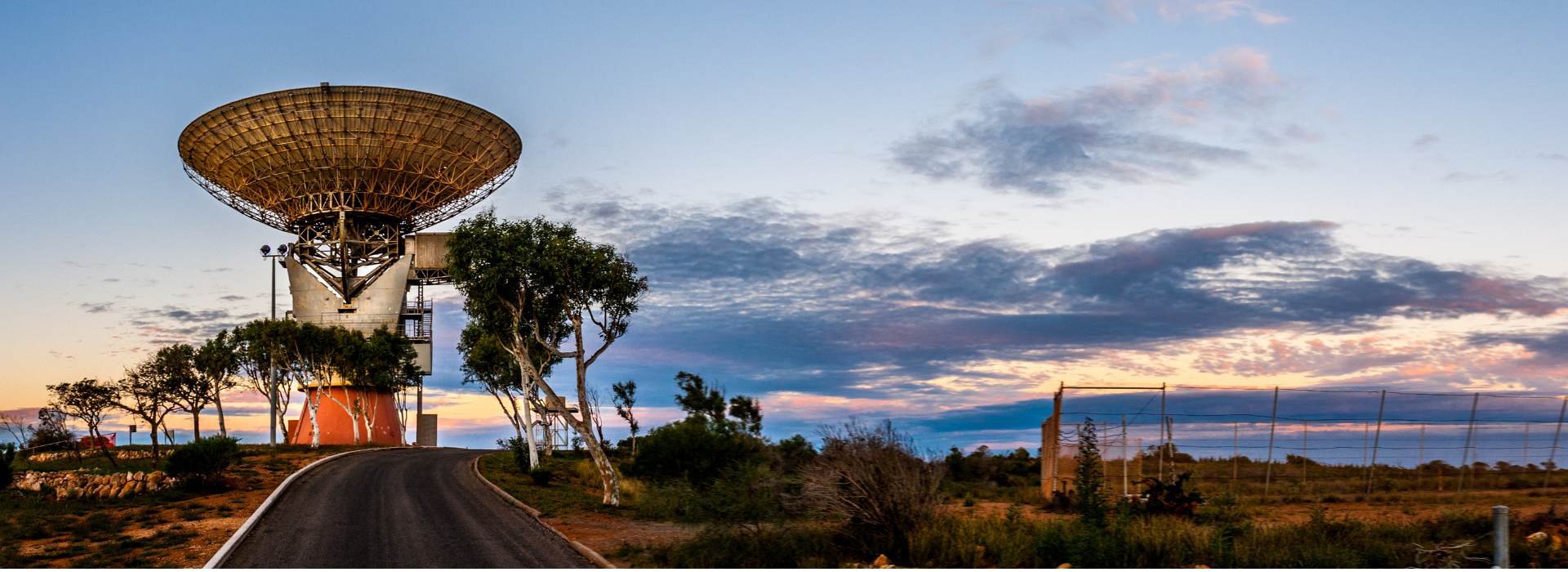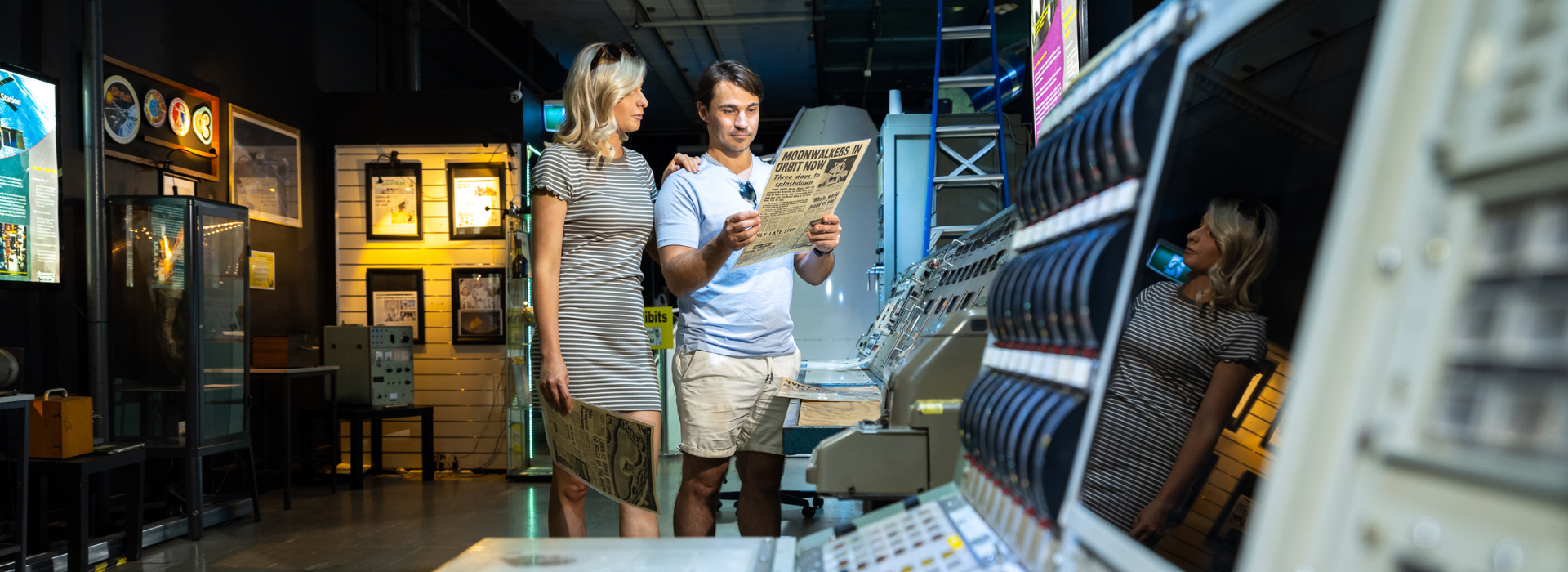
Carnarvon Space and Technology Museum
HISTORY OF THE OTC DISH
The Carnarvon Space and Technology Museum celebrates the little-known history of the role Carnarvon played in the manned space program and in the Australian satellite communications industry.
In 1966, the Casshorn antenna locally known as the ‘Sugar Scoop’ was used for the first television broadcast from Australia to the BBC in London. The program was called “Down Under Comes Up Live”.
On 21 July 1969, the day of the Apollo 11 moon landing, the Casshorn antenna which stands beside the OTC Dish relayed Neil Armstrong’s first steps on the Moon from NASA’s Honey Suckle Creek Tracking Station to Perth’s TV audience via Moree earth station – the first live telecast into Western Australia. Later in 1969, the larger 29.6 metre wide steerable antenna was built to facilitate better communication between the NASA Tracking Station and the USA.
The Carnarvon Tracking Station (no longer standing) was located 10 kilometres south from Carnarvon. The station was built to support NASA’s Gemini, Apollo and Skylab programs. It was commissioned in 1964 and operated for 11 years. It was the last station to communicate with the space capsules leaving the earth’s orbit, and the last to make contact before splashdown in the Pacific Ocean. At the height of the operation, it had a staff of 220 people.
The OTC Satellite Earth Station is now the site for the Carnarvon Space and Technology Museum, located approximately 6km from the town centre. The OTC Satellite Earth Station was opened in1966, initially the 12.8 metre wide Casshorn antenna known as the ‘sugar scoop’ was part of the global satellite communications system. The museum focuses on two parts, the Carnarvon Tracking Station and the OTC Satellite Earth Station, for which each station played separate roles in the early space industry.
Phase One of the museum was officially opened by retired NASA astronaut Buzz Aldrin in 2012, Phase Two by Australian born astronaut Andy Thomas in 2014 and Phase Three in 2016 by “The Last Man on the Moon” astronaut Gene Cernan. In 2018 a new display was built to honour the first American in space Alan Shepard. The full size 25-meter-tall mockup of a Mercury Redstone sits proudly sits at the entry of the museum. The museum is operated by a small, dedicated group of volunteers and is mainly self-funded.

out of this world experiences
Apollo Experience - Jump inside the full-size apollo capsule to experience a near to real life experience of the Saturn v launch. The capsule shakes and rattles while you take off!
Planetarium - Every half hour enjoy the wonderful movies in the 6-meter diameter inflatable planetarium. It's a full-on visual experience exploring space.
Space Theatre - Take a step back in time, relive the touching moments and watch the short documentaries of the space communications.
Museum Displays - ON display throughout the museum is the full-size Gemini and Apollo capsules, original mercury, Gemini and Apollo consoles, official piece of skylad and OTC and NASA memorabilia.
Interactive Displays - This is where the kids will stay entertained for hours. Suitable for all ages, you can try and land the space shuttle, learn about solar power and so much more. You are guaranteed your children to be scientist after a visit to the Space Museum.
Shape Shop - No visit the Space Museum is complete without taking some memorabilia from the Carnarvon Space and Technology Museum. Gold Coin collectors will find their very own Space coin, plus so much more like Astronaut ice-cream. Hmmm... interesting.
For more information on the Carnarvon Space and Technology Museum visit the website